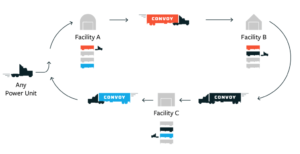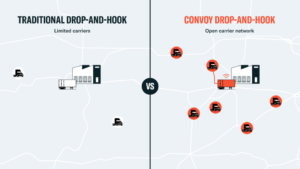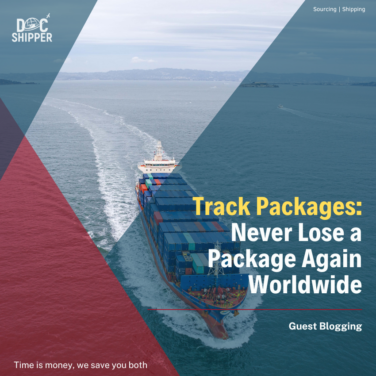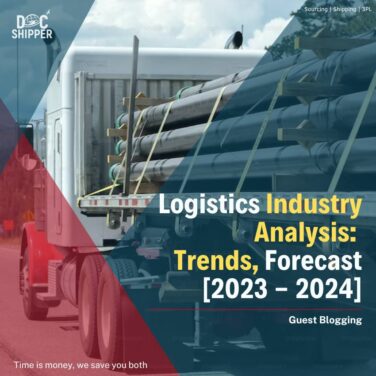The trucking and logistics business is lucrative. Many people worldwide have joined this business, while plenty of others are exploring the potential. Undoubtedly, the type of transportation service you choose to provide does impact the profit margin, but the perfect implementation of things, smooth process, and better management will have its additional benefits.
However, the thing we are going to discuss in this article is not how to start a transportation business, but a couple of industry terms that most transportation and logistics business operators ignore and that prevent them from saving thousands of dollars. We are talking about drop and hooks and live loading terms. Your truck or big rig drivers’ time does not spend driving alone but rather waiting around while the trucks or rigs are being loaded or unloaded. They seem to be a process, but did you know you can do away with this and save a lot of time, fuel, and operational costs?
All it requires is you understand the terms well and know how to solve them. So, we are here with a perfect solution to help you increase your profit margin significantly. Let’s understand these terms first.
What is a Live Load?
Live load refers to when a truck driver reaches a pickup location, then laborers arrive and load or unload the cargo. It consumes a considerable amount of time as the driver has to wait while the goods are loaded or unloaded. Depending on the goods, the loading and unloading time may take 40 minutes to 3 or 4 hours. While the shippers and receivers have nothing to worry much about these delays, the drivers and the fleet managers have to waste a lot of their time, that too without any detention payouts.
What about Drop and Hooks?
Drop, and hooks, refer to when a driver delivers a full container at a warehouse or yard and picks up the empty container from the nearby yard or warehouse. This process significantly reduces the waiting time for the driver. That, in fact, will save a lot of time and money. It might look smaller, but it’s a big saving in the long run. Although the driver may have to face a little issue in the case of drop and hooks as well, it is still faster than the live load.
DocShipper Tip
DocShipper Tip: The world of transportation is vast and complicated. This does not only affect the road, but also the sea.
So it is important to know everything about sea freight services as well.
When is Live Loading Suitable for You
Even though the live load is time consuming, it is suitable for transportation companies in many cases. Besides, there may be various scenarios when the shipper needs to consider live loads. Let’s the top such scenarios;
When you have a single trailer for each truck
Suppose, if you have five trucks and rigs into your fleet and five trailers, drop and hooks may not be suitable for you. This is because drop and hooks require two or more than two for each rig so that one trailer will be being loaded or unloaded while the other will be moving.
Not enough space
Space constraints may also be one of the reasons when you should consider live load instead of drop and hooks. When you have space where only a couple of your primitive overs and trailers can accommodate and no additional space for laden containers, live loading may be applicable.
When shipper does not have a shunting truck
When the shipper does not have a shunting truck, or you do not have enough prime mover, in such a case, the live load would be a more efficient method. Usually, shippers deploy a shunting truck at their yard to move a laden container from the loading bays to a parking pit where the prime mover would pick up for the destination after dropping the empty or laden one.
DocShipper Alert
DocShipper Tip : It is not uncommon for your goods to get damaged during transport. It is therefore equally important to prepare the pre-transport stage.
With this in mind, DocShipper has developed its packaging and protection service to relieve you of additional stress.When are Drop and Hooks Suitable for You
Drop, and hooks are suitable solutions for the live load approach. It’s the most preferred method today for saving development costs and time. It’s a less expensive and convenient method for high-volume shipping operations. Let’s explore when drop and hooks can be suitable;
Have the required number of trailers and enough parking space
If you have two or more trailers for each rig or truck and have space constraints, drop, and hook are preferred. The only thing that shippers and truckers will have to make sure that they have enough space for laden containers to keep loading bays clear.
When loading/unloading consumes a lot of person-hours
Live loading is ok in some cases, but consumes a lot of time and a significant workforce. If it takes more than 30 minutes to load-unload, then shippers may have to wear extra costs, the such delivery time would get delayed, and you may be entitled to pay driver detention charges.
When you have a high volume of shipping operation requirements
Obviously, when you have to face high-volume shipping operation requirements, you may need to create a strategy to tackle the rising shipping demands. And, drop, and hooks is the answer to this issue.
Which One from Live Load and Drop and Hooks Should You Choose?
We have categorically explained when you should go with a live load and go with a drop-and-hooks policy. Based on your requirements, you can choose any to go with. However, if you deal in larger shipping operations with shippers dealing in high-volume shipping requirements, drop, and hooks will save a considerable amount of time and money.
But there is a heck.
Drop, and Hooks aren’t Always Simple
This usually happens when you do not have proper coordination between the driver and the shipping yard. And, if you are following the traditional drop and hooks method, then such a method will be of no use in the tech-savvy era. Instead, you need to adopt modern drop and hook methods to tackle the challenges posed by traditional drop and hooks. So, let us draw a line between traditional vs. modern drop and hook freight and help you understand.
Traditional drops and hooks come with limited capacity, and it is functional when a fixed number of trailers move among a group of facilities. Besides, scalability may be a big concern.
Whereas modern drop and hooks freight approach, aka convoy drop and hooks, has put all these issues to rest by bringing advanced technologies, such as RFID, IoT, AI/ML, to strategize the operation.
Conclusion
No doubt, the drop, and hooks freight have the edge over live load, but you can go with any of them based on the requirements and demand surge. For example, you can follow both if you want to serve SMEs. You have referred to the article for the rest, and you must have understood the nitty-gritty of live loads and drop and hooks.
Go through the article again before you take a final call. You can also go through some other resources and get better ideas. Do let us know if you have any questions, suggestions, or anything to say to us. We are looking forward to hearing from you.
Contribute with your content to inspire thousands of logistics readers through our blog. Publishing posts is a daily mission for us
FAQ | Are Drop And Hooks Really Any Better Than Live Loads?
Loading is an important step for companies that export/import. Well done it allows the company to gain a lot of time and money.
As stated in the text, it depends on the conditions of each person. If you lack space it will be very complicated to set up your trucks and factory for Drop and hook use. But if you have the necessary capacity it is more advantageous to do so.
It is not necessarily the best solution because each means of transport has its advantages and disadvantages. However the transport by truck remains a reliable and effective way to transport its goods.
This is an important aspect indeed, but the rest should not be neglected. Packing and transport are also part of the logistics.
In general there is no wrong time to change, however it may be strategic to change in anticipation of an increase in your sales and you want to optimize your capacity.
Read More
You might be interested in these articles
DocShipper info: Do you like our article today? For your business interest, you may like the following useful articles :
- Procurement: Here Is Why You Should Source From China
- How to Manage Your Finances When Shipping And Exporting Abroad ?
- Most Effective Ways to Increase the Revenue of Your E-Commerce Store
- Which Shipping Mode To Choose For Your E-commerce Business?
- Best Practices For Outsourcing Your Manufacturing To China
Need Help with Logistics or Sourcing ?
First, we secure the right products from the right suppliers at the right price by managing the sourcing process from start to finish. Then, we simplify your shipping experience - from pickup to final delivery - ensuring any product, anywhere, is delivered at highly competitive prices.

Fill the Form
Prefer email? Send us your inquiry, and we’ll get back to you as soon as possible.
Contact us






